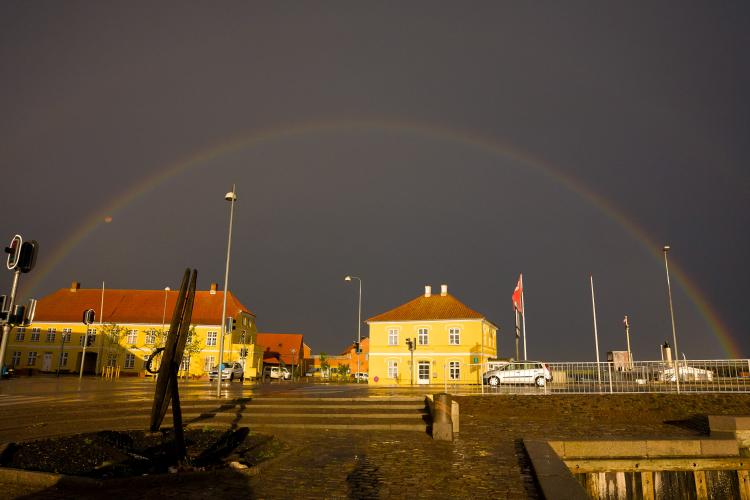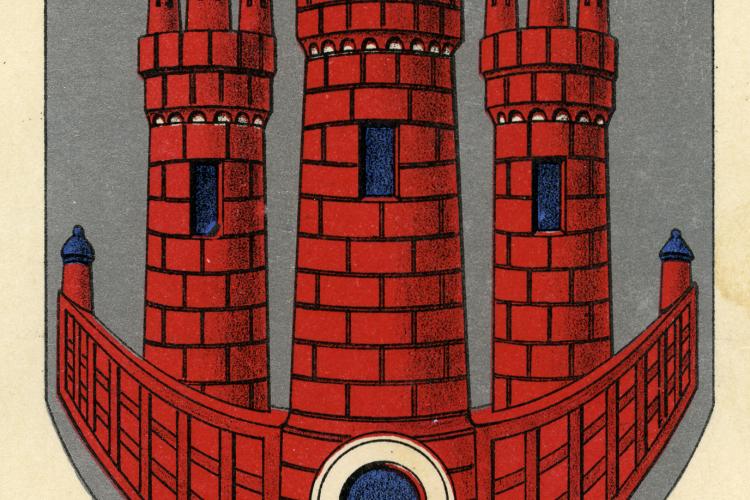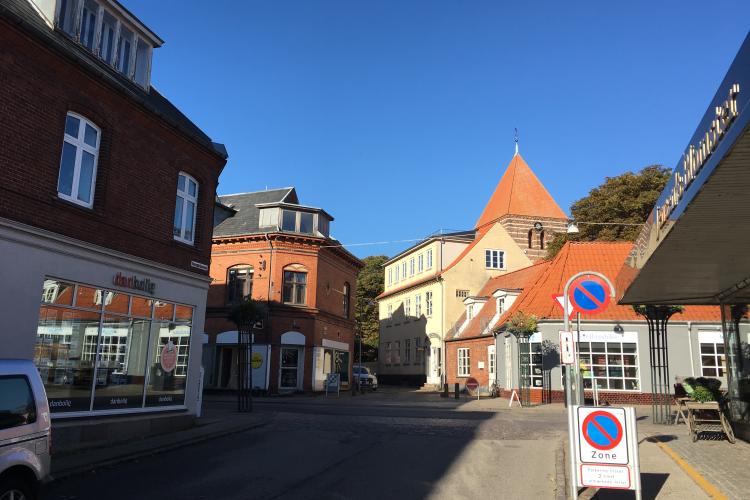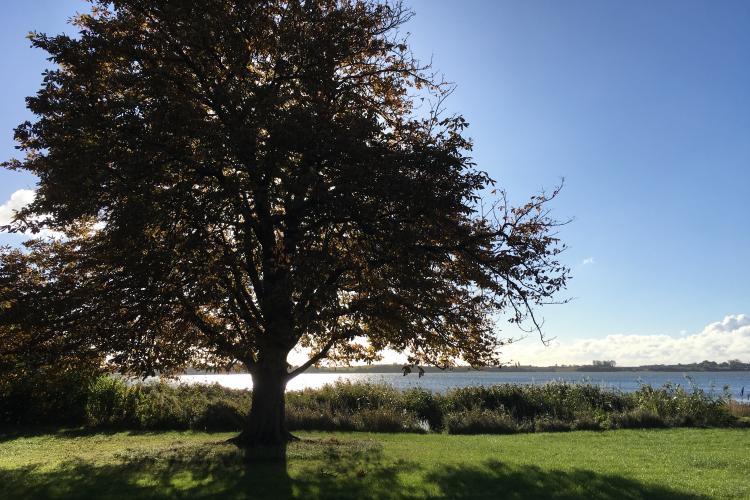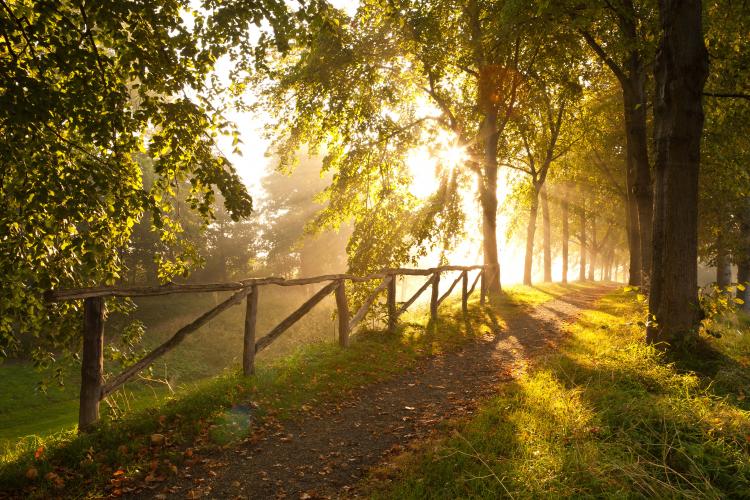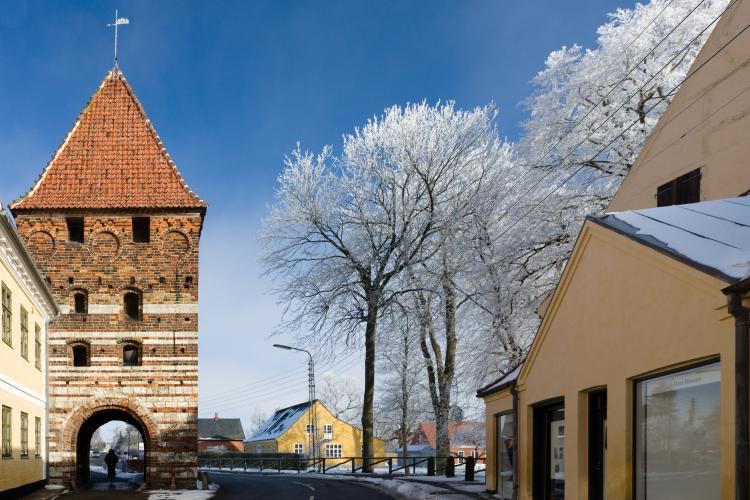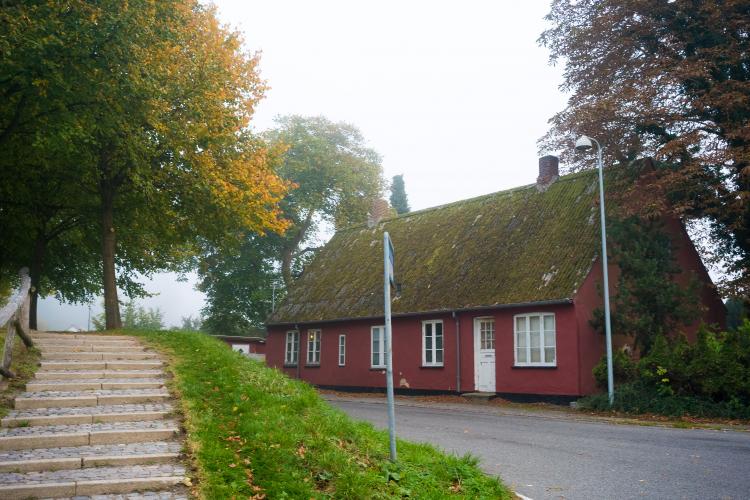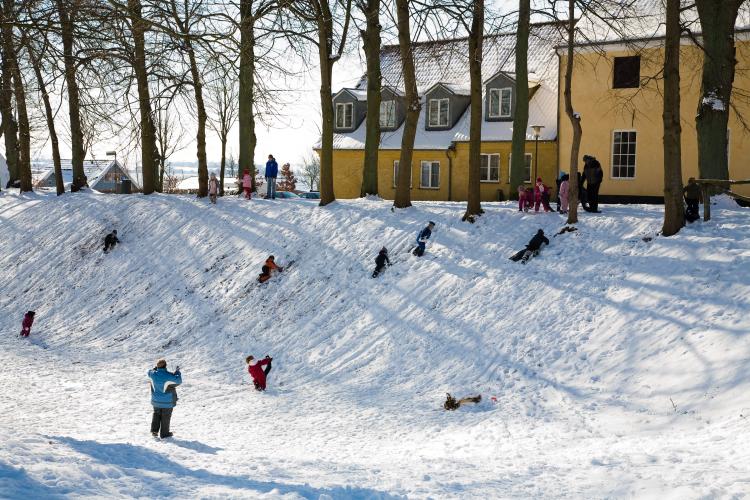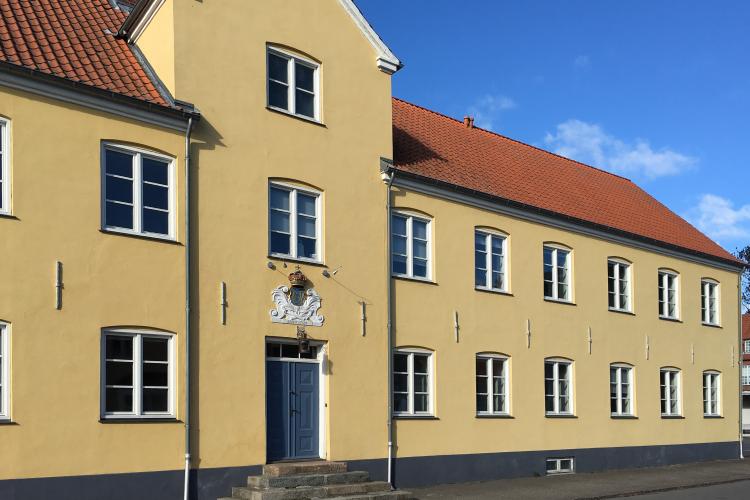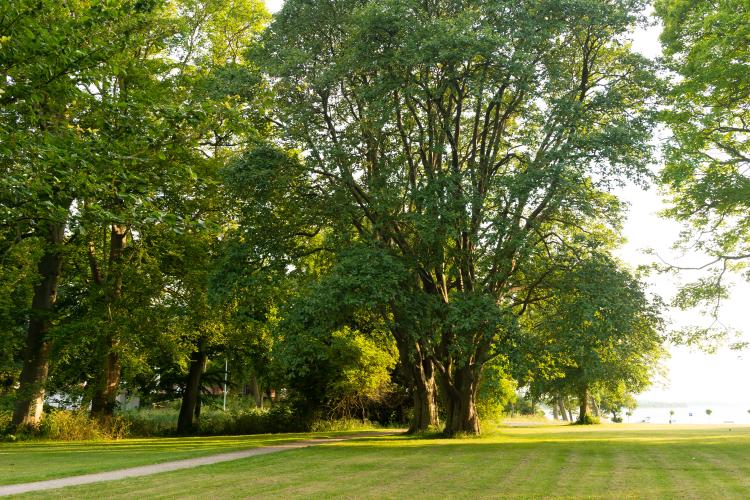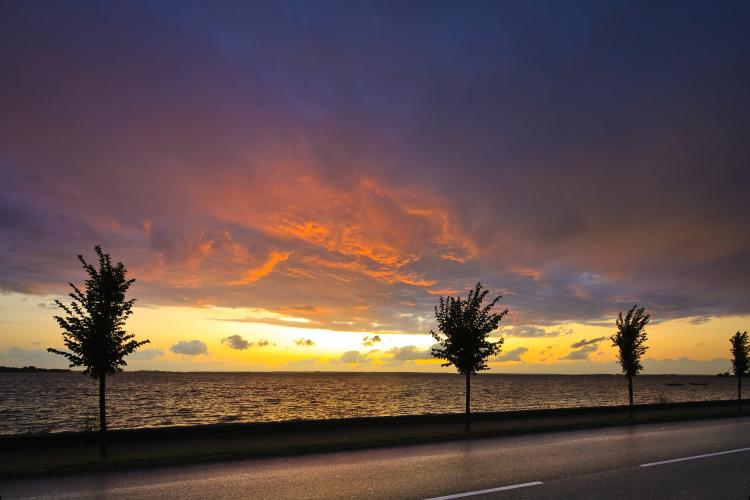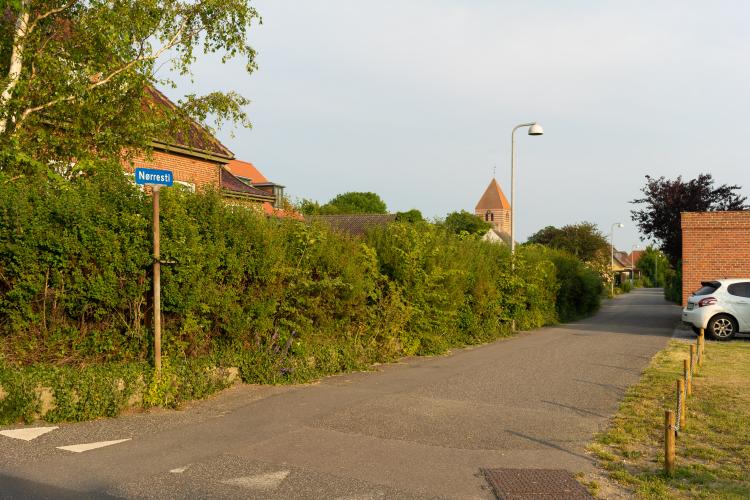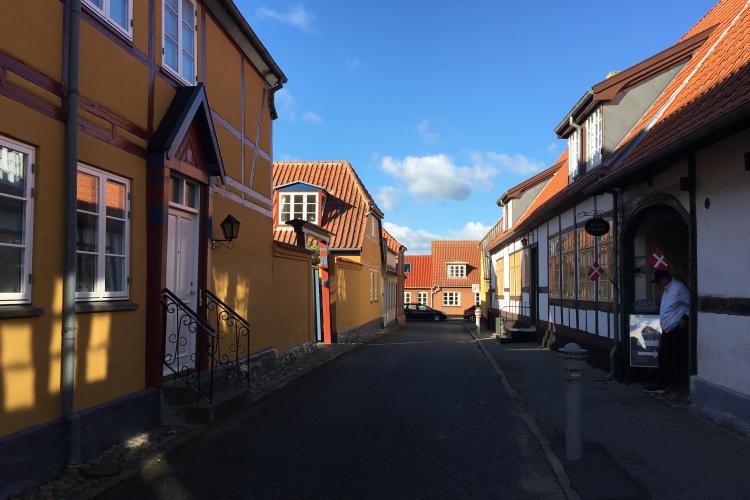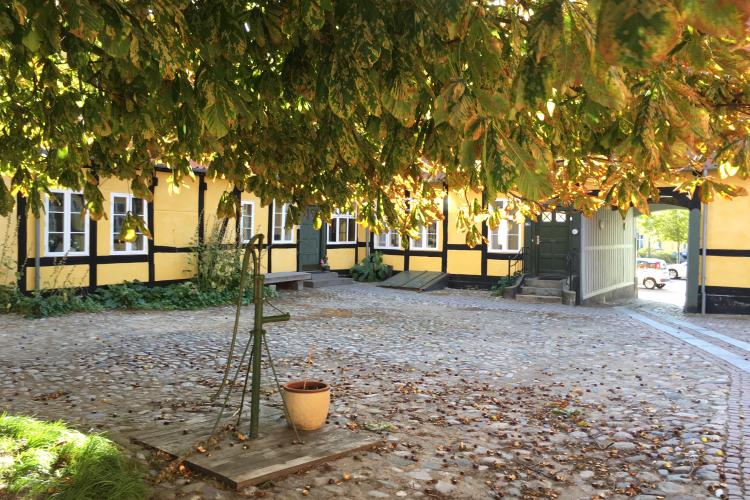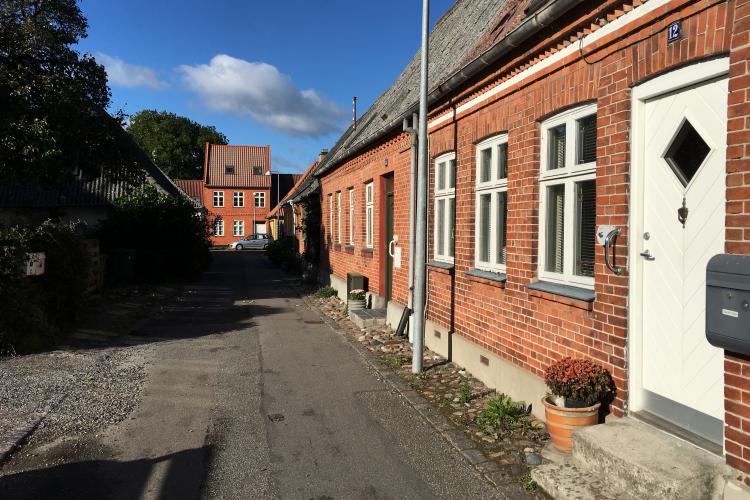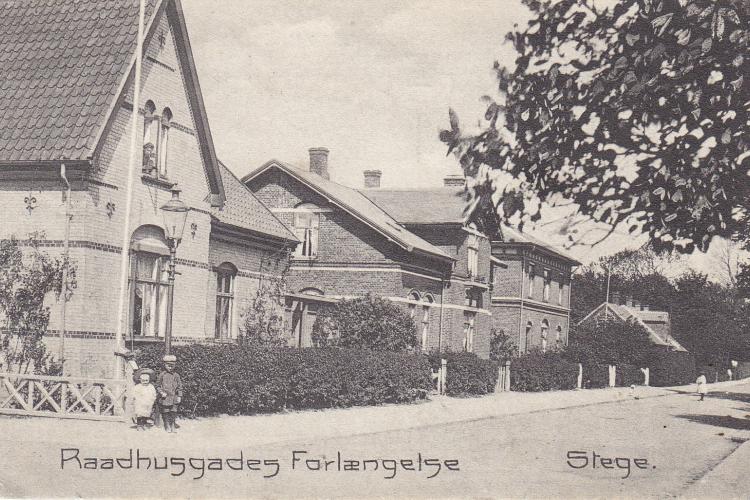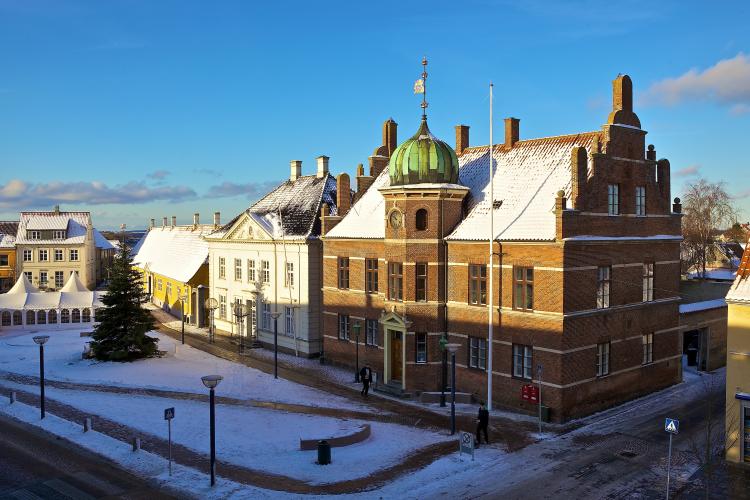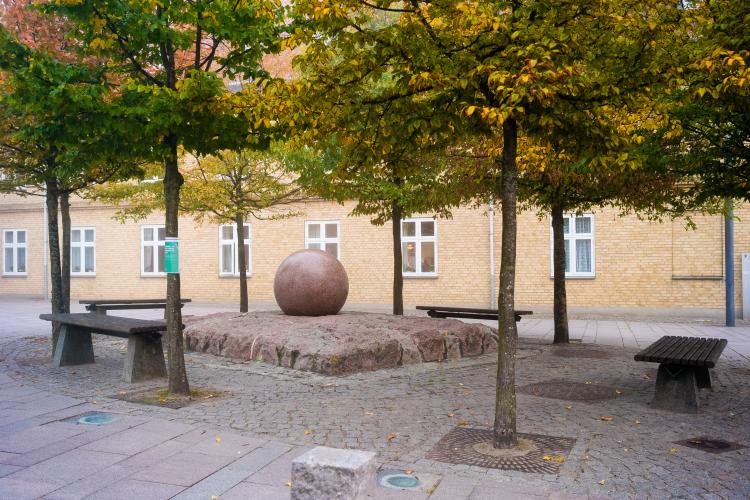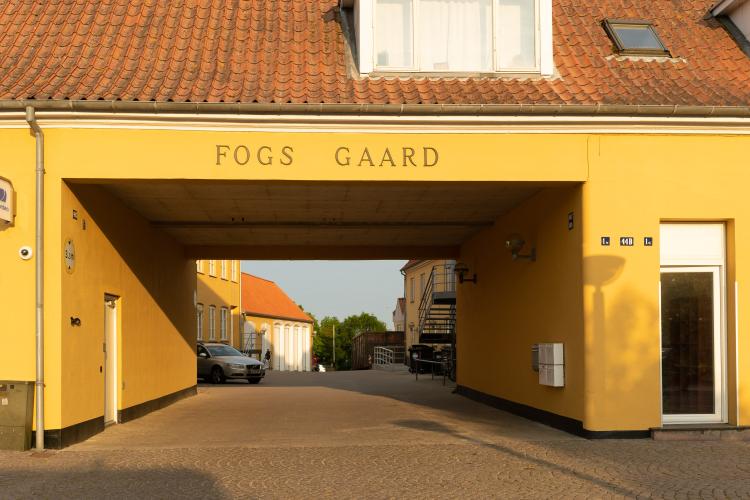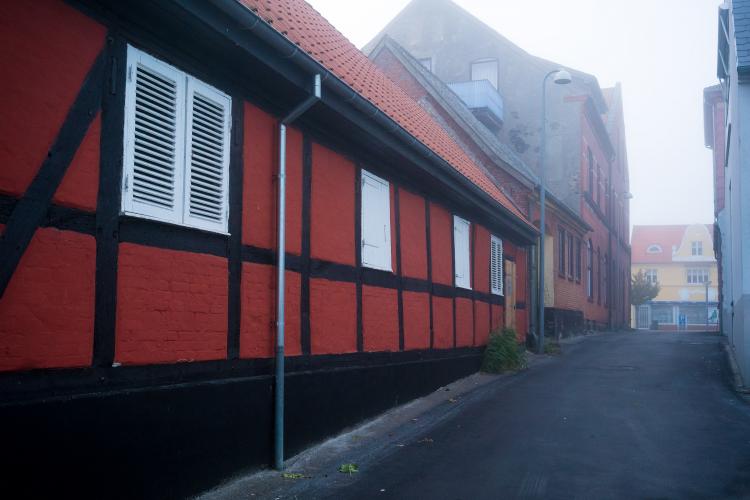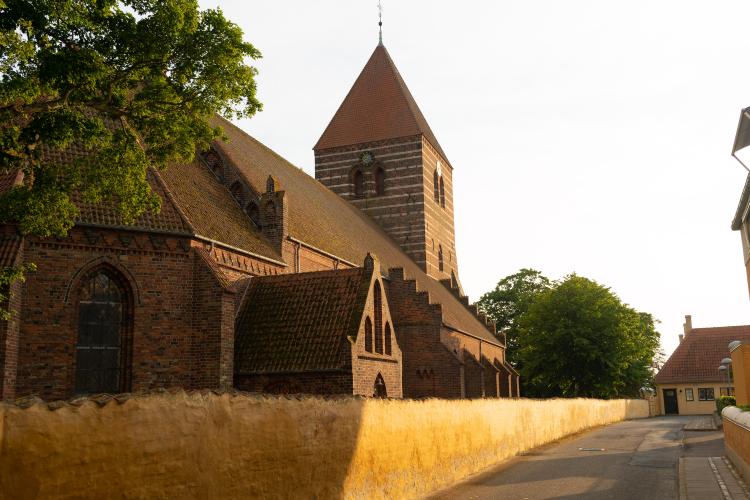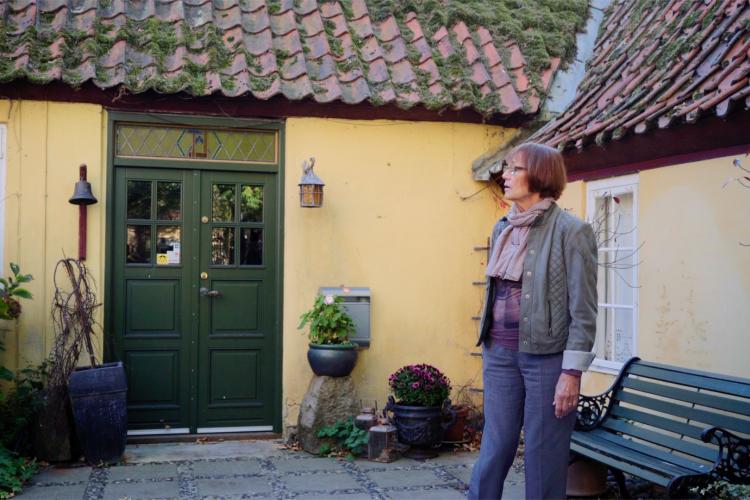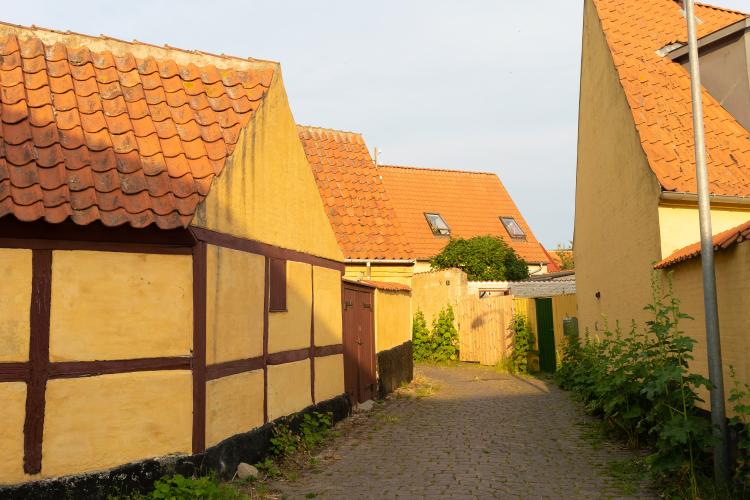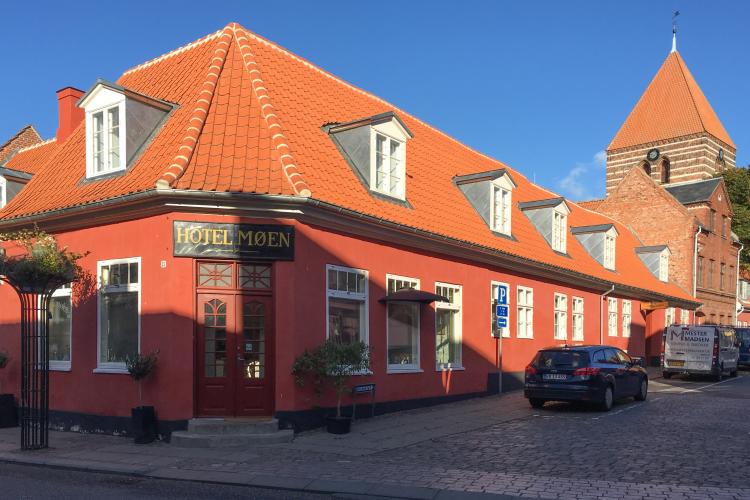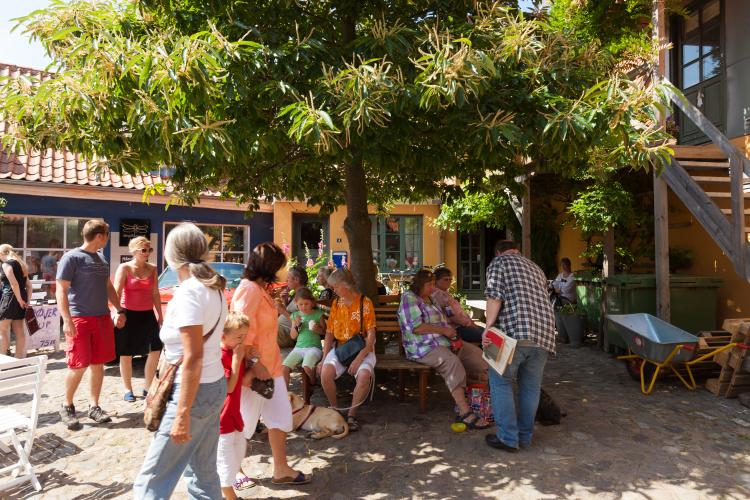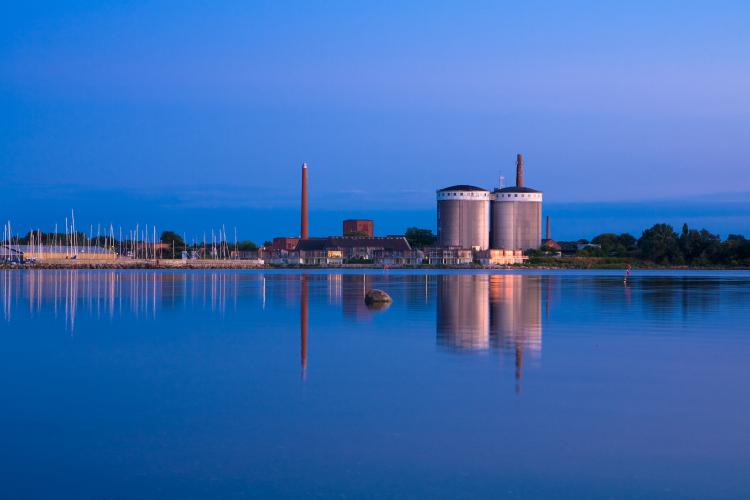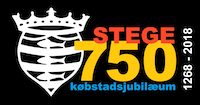The town walk in the old Danish market town of Stege is called ‘the Herring Route‘. This is because Stege, in the Middle Ages from approximately 1430 – 1530, reached its trading days of glory to an extent that has never been seen before or since. The heydays were very much a result of the herring fishing in the waters around Møn. The fishing resulted in an impressive presence at the markets in Skåne in 1494 where the stalls from Møn all together made up more than one third of all Denmark’s stalls. For this reason, the oldest coat of arms of Møn carries the image of a herring. Later, this was extended to depict three herrings in the final coat of arms of Møn. Therefore, symbols of herrings - 30 iron-cast herrings set on walls, balustrades, etc. – are set to guide our guests around Stege on a walk within the ramparts of our beautiful old town.
At the entrance to Stege Nor, remains of large stakes have been found which have probably been driven into the ground when Stege castle was built around 1200. Also, more tapered stakes with iron chains stretched between them have been found. This sea-blockade is mentioned in Saxo’s ‘Deeds of the Danes’ as the ‘Iron Block at Stikæ". This word means literally "stakes/ in the water driven” and has thus given the town the name Stege.
Welcome and enjoy your walk!
A historical walk around Stege


